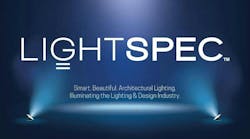We continue to see a plethora of ultraviolet (UV) product concepts, specifically in the UV-C band (100–280 nm) where the emission is known to deactivate pathogens including the coronavirus. Of course, we have warned that UV-C emission can be hazardous to human eyes and skin, so effective systems will either have to seal the UV-C source inside some type of chamber or operate in a space where no people are present. The answer in many cases will be robotic devices that disinfect a space. For example, our sister Endeavor Business Media publication BioOptics World wrote about how airline JetBlue is testing a robotic system from Honeywell with UV-C sources installed on extensible robotic arms that can direct the UV-C emission from above rows of seats as the vehicle travels down an aircraft aisle.
I certainly applaud the JetBlue effort. And we have seen other similar concepts. For example, Puro Lighting has supplied the New York Metropolitan Transit Authority (MTA) with what look like Roomba vacuums with UV-C tubes sticking out the top to disinfect subway train cars. It will be interesting to learn if such concepts are measurably effective.
I do see two potential problems with the concepts. First, the emission in, say, the airplane would not reach all areas of the airplane seat, armrest, or tray table where surface contamination might exist. Second, it would now appear that surface contamination is far less dangerous than airborne exposure in terms of coronavirus. I haven’t stopped washing my hands and using sanitizer. But I worry more about the air. I don’t think I would board a crowded subway car anytime soon. Still, we need to guard against every possibility of spread.
I’ve seen a few accounts that would indicate the subway cleaning effort that includes the UV-C treatment along with traditionally-applied disinfectant is working. Consider this account from Inside Edition. The article does seem to credit improved hygiene practices by citizens of New York for the results as much as dedicated disinfection efforts.
For up-to-the-minute LED and SSL updates, why not follow us on Twitter? You’ll find curated content and commentary, as well as information on industry events, webcasts, and surveys on our LinkedIn Company Page and our Facebook page.






